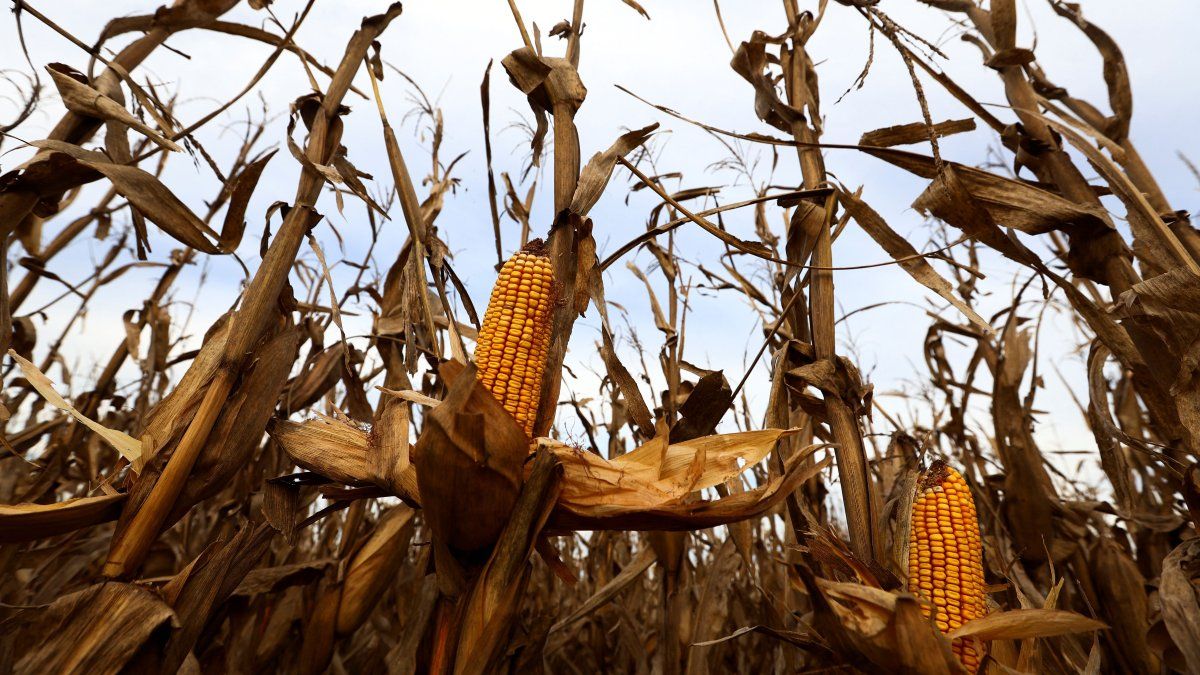Although there are encouraging data about the very low presence of the leafhopper -the pest that affected corn during the last season, experts recommend exhaustive monitoring during the coming weeks. What the producers plan to do and what is the recommendation of the companies.
After knowing the latest data from the National Dalbulus maidis Monitoring Network —coordinated by MAIZAR and made up of 450 centers throughout the country—, the good prospects regarding the number of hectares to be planted with corn in Argentina are consolidated. The latest report from the network warns of no presence of the pest in some areas and low or scarce presence in others.
Until now, according to the latest report from the Buenos Aires Grain Exchange, The sowing progress of commercial grain corn is located at 39.4% of the projected 6.3 MHawhich means an interannual advance of 13.2 pp. Most of it corresponds to early corn, which due to the lack of rain in the planting window could not be implanted in a timely manner.
This means that practically 60% of the campaign will be late corn, For which we must not only consider the good news from the planthopper monitoring network, but also that there is good water availability, both in those that remain to be planted and in those that have already made progress. It is worth mentioning that the Rosario Stock Exchange – which also considers the areas in which corn is planted for self-consumption – estimated that almost 8 million hectares would be planted in the 2024/25 campaign, which could translate into a production of between 51 and 52 million tons.
Federico Zerboni, president of Maizar, He assured in dialogue with Scope that “in a large part of the country there is no type of risk, luckily it started to rain in many places and people, like in the north of Córdoba, have already started planting and that is contagious. We believe that the drop in late corn acreage will be less than expected. As always, this is very dynamic, but we are seeing greater interest in planting corn in areas where before people were not going to plant because they see that there is no leafhopper. What we see now is very different from what happened in the past, because today we have the information to know what is happening and there are tools. Yeah The outlook continues like this for the next 40 days, a population of dalbulus will not grow that causes damagethat is why we say that the situation is different and that the producer does not allow planting due to a risk that does not exist. If you don’t want to plant because you don’t have the number, don’t plant, but don’t let it plant for fear of leafhoppers.”
What seed supply companies think
Francisco Pérez Brea, marketing manager of NK Semillas, assured in dialogue with Ámbito that “everything in the corn core area has good humidity, because the last three weeks it rained very well, even in the west of Buenos Aires, which is where water was needed. In the case of the NOA and NEA, although there is still a long way to go before sowing, because it is sown from the second half of December and the first half of January, the truth is that in general it has been raining well, so everything is shaping up so that there is a very important late corn planting. It must be taken into account that in all counts the population of leafhopper, the vector, is far below what was expected and that is very optimistic for late sowing.”
“An additional point regarding the behavior of the producers is that this year – due to the uncertainty of the gross margin – they left their fallow fields open and I believe that what is happening with sunflower in this campaign is a good example of what can happen with corn. In the case of sunflower, producers bought seed in the last month and not at the beginning of the campaign as is customary, because they saw that the gross margins were changing. These are last-minute decisions that can be made thanks to very good judgment. open fallows to have that flexibility,” complete.
According to Perez Brea, “There is an opportunity for late planting of corn from a climatic point of view, from the point of view of the dalbulus population, and from the point of view of prices.” Not a minor point is that this year the company put new hybrids on the market, so that the producer has more alternatives for managing weeds in sublots with yield and short cycles. They are hybrids with very good performance that have plasticity and adaptation for late sowing.
In general, the seed growers sought to contribute new technologies to this campaign, because agronomic management became a key detail to look for alternatives and combat the leafhopper. As Casmuz indicated, there is no single recipe, but rather it is about adding new technologies and tools at each stage.
From KWS Argentina, They warn that the campaign was atypical from every point of view, not only because of the climate and the pest that affected the corn in the previous cycle, but also because a complex economic context was experienced for decision-making, with many producers deciding on the date what they are going to do in the field, whether due to the price of commodities, margins or exchange conditions.
Santiago Vacca, manager of agronomic services at KWS Argentina explained to Ámbito that “the current strategy is to analyze region by region, distributor by distributor, be an ally with the producers, help them as much as possible considering that we come from two or three campaigns that were complicated” . For late sowing, the company focuses on offering different environments of potential yield, health and stability, seeking that the hybrids have that versatility. In the central north of the country, in addition to seeking potential and stability, what is being sought is health in the face of the main diseases that can occur and in that sense – with the genetic improvement program that we have in Jesús María – we address that need. of good behavior to the main diseases such as blight, rust, corn stunt (stunting of corn) where although the presence counts are low, it is another fear that the producer still has.
In general, companies had a large amount of resources to reach this point with new varieties of hybrids, which respond to current problems. It was not easy, because we had to carry out trials, obtain approvals and of course reach the producers so that they had the best tools when defining what to plant and when in the field. These decisions, which have an impact on each of the productive hectares, are the prelude to what will be harvested next year. Many times we count the dollars left by the campaign, but in reality that is only the end of a film that has several difficult-to-resolve scenes where producers and companies are protagonists.
Source: Ambito
I am an author and journalist who has worked in the entertainment industry for over a decade. I currently work as a news editor at a major news website, and my focus is on covering the latest trends in entertainment. I also write occasional pieces for other outlets, and have authored two books about the entertainment industry.




